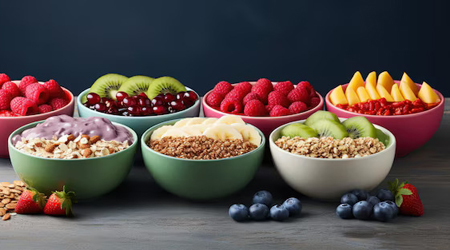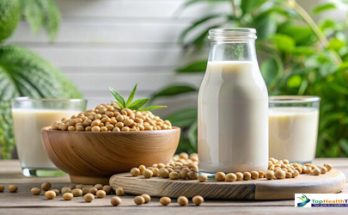Maintaining balanced blood sugar is essential for good health, especially for those with diabetes or those at risk of developing it. One key player in managing blood sugar is dietary fiber. By understanding how fiber affects blood sugar, you can make informed decisions about your diet to support overall health.
What is Dietary Fiber?
Dietary fiber is a type of carbohydrate found in plant-based foods that the body cannot digest. Unlike sugars and starches, which the body breaks down into glucose (sugar), fiber passes through the digestive system mostly unchanged. There are two types of dietary fiber:
- Soluble Fiber: This type dissolves in water and forms a gel-like substance in the digestive tract. It is found in foods like oats, beans, apples, and citrus fruits.
- Insoluble Fiber: This type does not dissolve in water. It adds bulk to stool and helps food pass through the digestive system. Sources include whole grains, nuts, and vegetables.
Both types of fiber are important for maintaining health, but soluble dietary fiber is particularly effective in managing blood sugar levels.
How Fiber Helps Control Blood Sugar
Slows Digestion and Sugar Absorption
Fiber slows digestion and thus controls the rate at which sugar is absorbed into the bloodstream. Specifically, soluble fiber forms a gel-like substance that delays both carbohydrate breakdown and sugar absorption.
For instance, a study published in Diabetes Care demonstrated that soluble fiber significantly slows glucose absorption. Consequently, this effect leads to lower blood sugar spikes after meals, which helps maintain steady blood sugar levels throughout the day.
Reduces Insulin Resistance
Moreover, a high-fiber diet enhances the body’s response to insulin, the hormone responsible for transporting sugar from the blood into cells. This improved insulin sensitivity, therefore, helps keep blood sugar levels within a healthy range.
Additionally, research published in The American Journal of Clinical Nutrition linked increased fiber intake, particularly from whole grains, with a significant reduction in insulin resistance and better blood sugar control.
Enhances Satiety and Reduces Caloric Intake
Furthermore, fiber-rich foods increase feelings of fullness, which reduces the likelihood of overeating. When you feel full, you are less likely to consume foods that could spike your blood sugar.
In addition, research in Nutrition Reviews indicates that diets high in fiber, especially soluble fiber, can lead to reduced calorie intake. This reduction, in turn, aids weight management and lowers the risk of insulin resistance.
Lowers Glycemic Index of Foods
Additionally, foods high in fiber typically have a lower glycemic index (GI). The GI measures how quickly a food raises blood sugar levels. Consequently, low-GI foods cause a slower rise in blood sugar, helping to avoid rapid spikes and drops that can be harmful, especially for individuals with diabetes.
A meta-analysis in The American Journal of Clinical Nutrition found that an increased intake of dietary fiber, particularly soluble fiber, is associated with improved glycemic control in people with type 2 diabetes.
Top 20 Low Glycemic Index Foods for Blood Sugar Control
| Food | Glycemic Index (GI) |
|---|---|
| Lentils | 32 |
| Chickpeas | 28 |
| Kidney Beans | 24 |
| Quinoa | 53 |
| Steel-cut Oats | 55 |
| Barley | 28 |
| Sweet Potato | 44 |
| Apple | 36 |
| Pear | 38 |
| Berries (Blueberries) | 25 |
| Grapefruit | 25 |
| Peaches | 42 |
| Oranges | 40 |
| Kiwi | 50 |
| Greek Yogurt (unsweetened) | 33 |
| Carrots | 39 |
| Hummus | 6 |
| Spinach | 15 |
| Broccoli | 10 |
| Nuts (Almonds) | 15 |
These foods are great choices for managing blood sugar due to their low glycemic index values.


Best Fiber Sources for Blood Sugar Management
Incorporating a variety of fiber-rich foods into your diet can significantly help in managing blood sugar levels. Below are some of the best sources:
Soluble Fiber Sources
- Oats: Contain beta-glucan, a type of soluble fiber that has been shown to improve blood sugar control.
- Legumes: Beans, lentils, and chickpeas are high in soluble fiber and protein, which help maintain stable blood sugar.
- Fruits: Apples, pears, and berries are rich in pectin, a type of soluble fiber that slows glucose absorption.
- Nuts and Seeds: Chia seeds, flaxseeds, and almonds are packed with soluble fiber and healthy fats, supporting blood sugar balance.
Insoluble Fiber Sources
- Whole Grains: Brown rice, quinoa, and whole wheat products provide insoluble fiber, which aids digestion.
- Vegetables: Leafy greens, carrots, and broccoli are fiber-rich and help regulate bowel movements, reducing blood sugar spikes.
- Nuts: Walnuts and other nuts add insoluble fiber, enhancing digestive health and maintaining steady glucose levels.
Recommended Fiber Intake for Blood Sugar Control
The American Diabetes Association recommends consuming at least 25 to 30 grams of fiber per day, with a focus on soluble fiber for those managing blood sugar. However, most people consume far less than this recommended amount. Gradually increasing fiber intake while drinking plenty of water can help you reach this goal.
Tips for Incorporating Fiber into Your Diet
- Start Slowly: Increase fiber intake gradually to avoid digestive discomfort, such as bloating and gas.
- Stay Hydrated: Drink plenty of water to help fiber move through the digestive tract smoothly.
- Mix Fiber Types: Include both soluble and insoluble fiber in your meals for optimal blood sugar control.
- Choose Whole Foods: Opt for whole grains, fruits, and vegetables instead of processed foods that often lack fiber.
- Use Fiber Supplements: If it’s challenging to get enough fiber through diet alone, fiber supplements like psyllium husk can be helpful. However, they should be used to complement, not replace, dietary sources of fiber.
Fiber and Diabetes Prevention
High-fiber diets have been linked to a reduced risk of developing type 2 diabetes. The slow digestion and absorption process moderated by fiber help keep blood glucose levels stable, reducing the likelihood of insulin resistance.
A study in The New England Journal of Medicine demonstrated that individuals with higher fiber intakes, particularly from whole grains, had a significantly lower risk of developing type 2 diabetes .

Potential Side Effects of Excess Fiber
While fiber is beneficial, consuming too much fiber can cause problems such as:
- Digestive Issues: Excess fiber, especially insoluble fiber, can lead to bloating, gas, and constipation.
- Interference with Nutrient Absorption: Too much fiber can affect the body’s ability to absorb essential nutrients like calcium, iron, and zinc.
- Impact on Medication Absorption: Fiber can interfere with the absorption of certain medications. It is recommended to separate the timing of fiber supplements and medication intake.
Conclusion
The management of blood sugar levels is significantly influenced by fiber. Digestion is slowed, insulin sensitivity is improved, satiety is promoted, and the glycemic index of foods is lowered through its intake. By incorporating a variety of fiber-rich foods into the diet, more stable blood sugar levels can be achieved, and the risk of type 2 diabetes can be reduced. For maximum health benefits, a gradual increase in fiber intake, adequate hydration, and a mix of both soluble and insoluble fiber are recommended. As with any dietary change, consultation with a healthcare professional is advised to tailor fiber intake to individual health needs
Related post for Nutrition and Food>>>
References
- Diabetes Care. https://pubmed.ncbi.nlm.nih.gov/
- The American Journal of Clinical Nutrition. https://pubmed.ncbi.nlm.nih.gov/
- Nutrition Reviews. https://pubmed.ncbi.nlm.nih.gov/
- The American Journal of Clinical Nutrition. https://pubmed.ncbi.nlm.nih.gov/
- The New England Journal of Medicine. https://pubmed.ncbi.nlm.nih.gov/




